
|
Cloth Diaper Pail - Wet vs Dry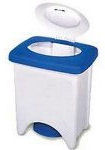
Cloth Diaper Pail - Wet vs Dry Cloth Diaper Pails If you decide to cloth diaper you'll need a way to store wet and soiled cloth diapers until laundry day. You can use a wet pail, a dry pail, or a combination of both. Since starting our cloth diapering journey we've used all three systems and have researched the pros and cons of each. We hope our experience and research will help you determine which cloth diaper pail is best for your family. Wet Cloth Diaper Pail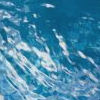
When we first started cloth diapering we exclusively used a wet cloth diaper pail, also known as "soaking the diapers". This method stores used cloth diapers in water until washing day. In addition to water, many parents use baking soda, white vinegar, essential oils, and other additives in their cloth diaper pail to reduce odor and staining. Never add bleach or laundry detergent to the soaking water because they are too harsh for your diapers, causing them to quickly break down.
Combination Cloth Diaper Pail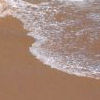
Several years into our cloth diapering experience we decided to try a combination of wet pail and dry pail. There are two ways to do this, the one-pail method and the two-pail method.
Advantages are the same as both wet and dry cloth diaper pails plus lighter pails and more room to store used diapers - something that is especially helpful for families with more than one child in diapers. Disadvantages are the same as wet and dry cloth diaper pails plus the added expense and room required by a second cloth diaper pail. The two-pail system worked fairly for us well until we bought a front loading washing machine and couldn't figure out how to get the sopping wet diapers from the wet pail into the machine without touching them. At this point we switched to only using a dry cloth diaper pail. Dry Cloth Diaper Pail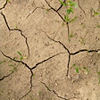 Since the front loading machine entered our house we have completely converted to a dry cloth diaper pail, and it's been so easy we wish we'd used it all along! This method stores used cloth diapers in a completely dry pail, with no rinsing or standing water, until wash day. Simply toss used diapers into the cloth diaper pail! Many parents, like us, shake cloth diapers over a toilet to remove any loose solids before putting them in the dry pail. As with the other methods, baking soda white vinegar, or essential oils can be used to help control odors. Baking soda can be sprinkled directly into the pail, but vinegar and essential oils should be sprinkled on a cloth wipe or fabric scrap to avoid damaging your diapers.
Since the front loading machine entered our house we have completely converted to a dry cloth diaper pail, and it's been so easy we wish we'd used it all along! This method stores used cloth diapers in a completely dry pail, with no rinsing or standing water, until wash day. Simply toss used diapers into the cloth diaper pail! Many parents, like us, shake cloth diapers over a toilet to remove any loose solids before putting them in the dry pail. As with the other methods, baking soda white vinegar, or essential oils can be used to help control odors. Baking soda can be sprinkled directly into the pail, but vinegar and essential oils should be sprinkled on a cloth wipe or fabric scrap to avoid damaging your diapers.
Advantages to the dry pail method are a lighter pail and safer storage around small children. Many parents also feel that there is less odor to a dry cloth diaper pail, but other parents disagree. Disadvantages are a possibility of more stains if the diapers dry before being washed, and the need for a diaper pail liner or frequent cleaning of the cloth diaper pail.  To use a dry cloth diaper pail:
To use a dry cloth diaper pail:
"I use a 10 gal tub w/lid, but for the poo ones, my husband came up with an idea... we knock off the excess poop and then we take the diaper to the sink and use an old toothbrush and wash off the poo that's left with hot as you can take water and then wring the diaper out and throw it in the pail...we have no problems w/staining or smell either." Jackie A, Tulsa OK. Which Cloth Diaper Pail to Choose?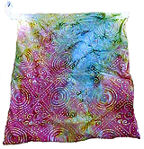
There are so many diaper pails on the market it's easy to become overwhelmed. Don't worry, you don't need any a fancy diaper pail - any large plastic container with a lid will work! Some parents use a five-gallon bucket, others use a medium-sized trash can. If you plan to use the dry method and don't have room for a cloth diaper pail, try a waterproof pail liner hung on a door knob. No matter which cloth diaper pail you choose to store your cloth diapers until laundry day, please make sure that it is securely covered and inaccessible to curious children and pets. More Cloth Diaper Pail InformationBrowse the following articles for more information on choosing a cloth diaper pail method.
Happy Cloth Diapering!
Amy S. Nogar - Owner Zany Zebra Designs, LLC
Cloth Diapering Expert and Advocate Link to Cloth Diaper Pail - Wet vs DryCloth Diaper Pail - Wet vs Dry Cloth Diaper Pails If you feel that this article has been helpful to you and that it may also be useful to others, please consider linking to it as a resource on your website or blog! Link to Cloth Diaper Pail - Wet vs DryTitle: Cloth Diaper Pail - Wet vs Dry Pail liner photo courtesy of Happy Tushies

|
|
| Policies | Privacy Policy | Resources | Site Map |
Copyright © 2005 Amy Nogar of Zany Zebra Designs. All Rights Reserved. |
 Most parents reduce the amount of waste in the cloth diaper pail by shaking solids into a toilet, dunking and swishing diapers in a toilet, or rinsing diapers with a
Most parents reduce the amount of waste in the cloth diaper pail by shaking solids into a toilet, dunking and swishing diapers in a toilet, or rinsing diapers with a  To use the wet pail method:
To use the wet pail method:
 To use one combination cloth diaper pail:
To use one combination cloth diaper pail:

